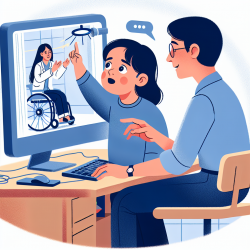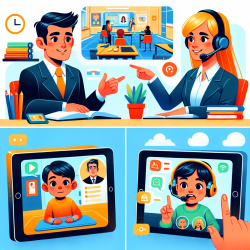The COVID-19 pandemic posed significant challenges for the rehabilitation of children with cerebral palsy (CP). Traditional in-person therapy sessions were interrupted, leaving many children without the necessary support to maintain their functional gains. However, recent research highlights the potential of telerehabilitation (TR) as an effective alternative during such disruptions. This blog explores the key findings from the research article titled "Role of telerehabilitation in the rehabilitation of children with cerebral palsy during COVID-19: A review" and offers insights for practitioners looking to enhance their skills or delve into further research.
Key Findings from the Research
The review, conducted by Kashif et al., examined 28 studies that investigated the effectiveness of TR for children with CP during the COVID-19 pandemic. The studies included randomized controlled trials, surveys, clinical trials, and case reports. Here are some of the significant findings:
- Action Observation Treatment (AOT): Three randomized controlled trials revealed that AOT could be a useful approach for TR in children with CP. AOT involves observing meaningful tasks and attempting to replicate them, which activates mirror neuron mechanisms to enhance motor functions.
- Computer-Based Games and Virtual Reality: Several studies supported the use of computer-based games, nonimmersive virtual reality, and wearable haptic devices as effective TR methods. These technologies can improve stability, balance, and upper extremity functions in children with CP.
- Robots: The use of social assistive robots in TR was also highlighted as a promising approach. Robots can complement traditional therapies and provide consistent guidance in home settings.
Implementing Telerehabilitation in Practice
For practitioners looking to incorporate TR into their practice, the following steps can be beneficial:
- Utilize Action Observation Treatment: Implement AOT by using video clips that demonstrate meaningful tasks. Encourage children to observe and then replicate these tasks to enhance their motor skills.
- Incorporate Technology: Leverage computer-based games and virtual reality systems to create engaging and effective rehabilitation sessions. These tools can be particularly useful for balance and stability training.
- Explore Robotic Assistance: Consider integrating social assistive robots into your therapy sessions. These robots can provide consistent and personalized guidance, making them valuable additions to home-based rehabilitation.
Encouraging Further Research
While the current research provides promising insights, there is still much to explore in the field of telerehabilitation for children with CP. Practitioners are encouraged to engage in further research to identify new methods and technologies that can enhance TR. Areas for future research include:
- Exploring the effectiveness of TR for other neurological and musculoskeletal conditions.
- Investigating the long-term outcomes of TR interventions.
- Developing more specific outcome measures to evaluate the impact of TR.
By staying informed and contributing to ongoing research, practitioners can play a crucial role in advancing the field of telerehabilitation and improving outcomes for children with CP.
Conclusion
Telerehabilitation has emerged as a valuable alternative to traditional therapy for children with CP, particularly during the COVID-19 pandemic. The research highlights the effectiveness of various TR methods, including action observation treatment, computer-based games, virtual reality, and robotic assistance. By implementing these findings in practice and engaging in further research, practitioners can continue to enhance the quality of care for children with CP.
To read the original research paper, please follow this link: Role of telerehabilitation in the rehabilitation of children with cerebral palsy during COVID-19: A review.










